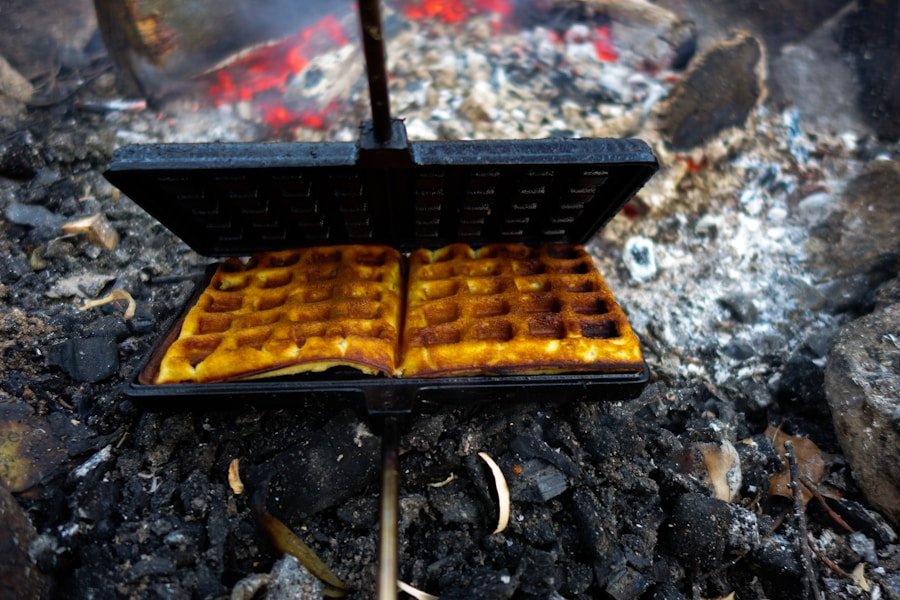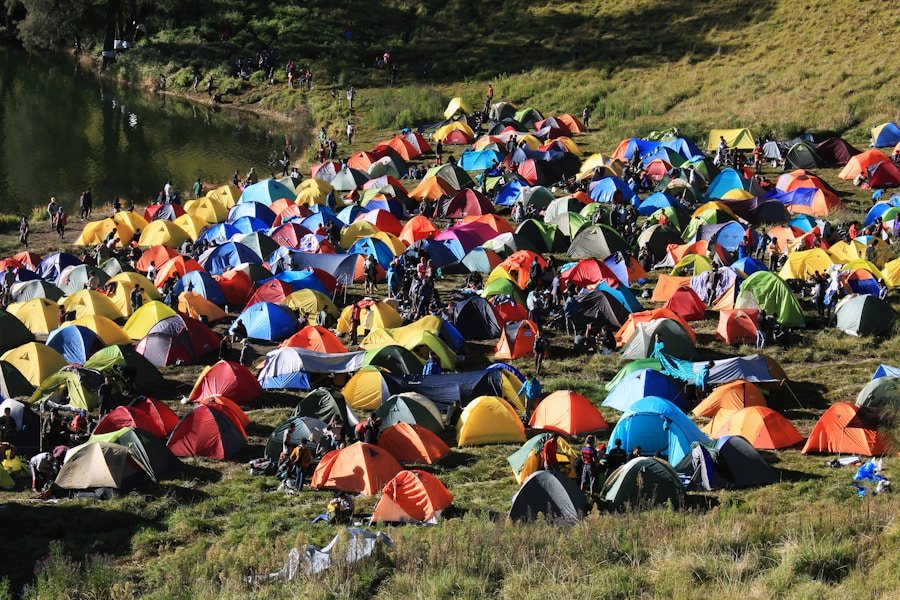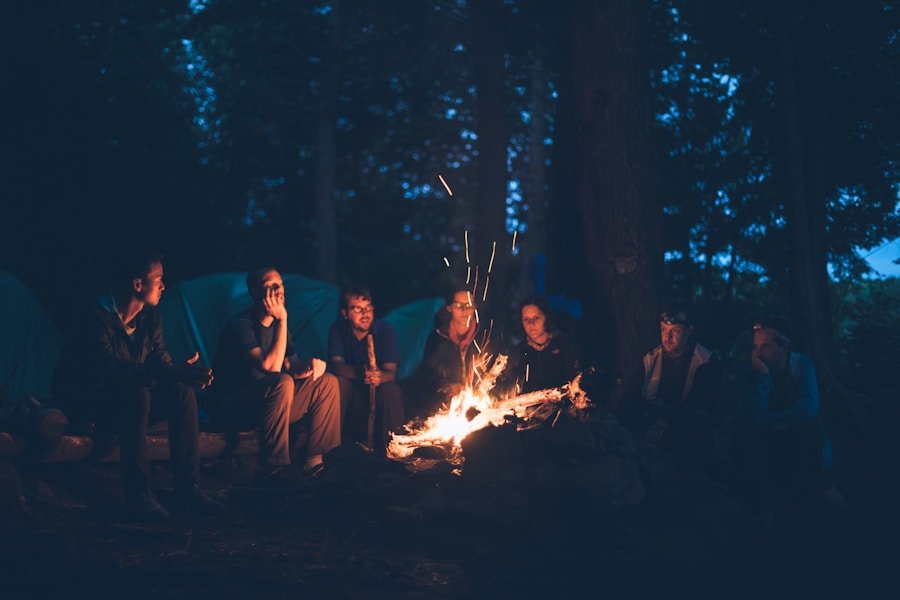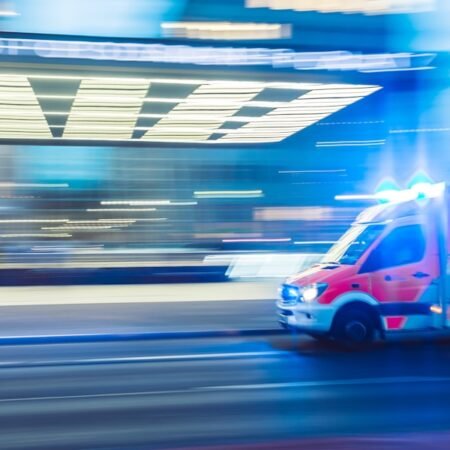When planning a camping breakfast menu, it is essential to select foods that are easy to prepare and cook in an outdoor setting. Popular camping breakfast options include oatmeal, eggs, bacon, and pancakes, which not only taste great but also provide the necessary energy for outdoor activities. It is crucial to consider any dietary restrictions or preferences of your camping companions, such as vegetarian or gluten-free requirements, to ensure that there are suitable options available for everyone.
Additionally, consider the time and effort required to prepare each dish, as you want to minimize cooking time and maximize your time enjoying nature. When planning your camping breakfast menu, it is also vital to think about the necessary cooking equipment. For instance, if you plan to make pancakes, a portable griddle or skillet is required.
To cook bacon and eggs, a portable stove or campfire grill is necessary. Consider the size, weight, and ease of cleaning and storing the equipment you bring, as well as the basic cooking utensils you will need, such as a spatula, tongs, and a sharp knife. By planning ahead and considering these factors, you can ensure a delicious and hassle-free camping breakfast.
Key Takeaways
- Plan your camping breakfast menu ahead of time to ensure you have all the necessary ingredients and equipment.
- Choose the right cooking equipment for your camping breakfast, such as a portable stove or grill, to ensure safe and efficient cooking.
- Properly prepare and store your ingredients in airtight containers to prevent contamination and spoilage.
- Follow cooking safety tips for campfires and stoves, such as keeping a safe distance and using designated cooking areas.
- Practice proper food handling and storage techniques to prevent foodborne illnesses while camping.
Choosing the Right Cooking Equipment
When it comes to cooking breakfast while camping, choosing the right cooking equipment is essential. The type of equipment you’ll need will depend on the specific dishes you plan on preparing, as well as the size of your camping group. For example, if you’re planning on cooking a large breakfast for a group of people, you’ll likely need a larger stove or grill to accommodate the amount of food you’ll be cooking.
On the other hand, if you’re camping solo or with just one other person, a smaller, more portable stove or grill may be sufficient. In addition to the size of the equipment, it’s also important to consider the type of fuel it uses. Some camping stoves and grills run on propane, while others use charcoal or wood.
Each type of fuel has its own advantages and disadvantages, so it’s important to choose the one that best suits your needs. Propane stoves are convenient and easy to use, but they require you to bring along extra fuel canisters. Charcoal and wood grills provide a more authentic camping experience, but they require more effort to light and maintain.
By carefully considering your cooking needs and preferences, you can choose the right cooking equipment for your camping breakfast.
Preparing and Storing Ingredients
Before heading out on your camping trip, it’s important to prepare and store your ingredients in a way that will keep them fresh and safe to eat. This means packing perishable items such as eggs, milk, and meat in a cooler with plenty of ice packs to keep them cold. It’s also a good idea to pre-measure any dry ingredients such as flour, sugar, and spices in resealable bags or containers to save space and reduce waste.
Additionally, consider the types of ingredients that will travel well and won’t spoil easily. For example, instead of bringing fresh fruit that may bruise or spoil during transport, consider bringing dried fruit or fruit cups that are easier to store and won’t go bad as quickly. When it comes to storing ingredients at your campsite, it’s important to keep them in a safe and secure location.
This means keeping perishable items in a cooler or food storage container to protect them from animals and insects. It’s also important to keep raw meat separate from other foods to prevent cross-contamination. By taking the time to properly prepare and store your ingredients before and during your camping trip, you can ensure that your breakfast will be safe and delicious.
Cooking Safety Tips for Campfires and Stoves
When cooking breakfast while camping, it’s important to follow proper safety precautions when using campfires and stoves. If you plan on cooking over an open flame, make sure to build your fire in a designated fire pit or grill area away from any flammable materials such as tents or dry grass. Always keep a bucket of water or a fire extinguisher nearby in case of emergencies.
When using a camping stove, make sure it is set up on a stable surface away from any flammable materials. It’s also important to follow the manufacturer’s instructions for lighting and using the stove safely. In addition to fire safety, it’s important to practice proper food handling and cooking techniques to prevent foodborne illness.
This includes washing your hands before and after handling food, using separate cutting boards for raw meat and other foods, and cooking meat to the proper internal temperature. It’s also important to keep perishable foods cold until you’re ready to cook them to prevent spoilage. By following these safety tips, you can ensure that your camping breakfast will be both delicious and safe to eat.
Proper Food Handling and Storage
Proper food handling and storage are essential when cooking breakfast while camping. This includes keeping perishable items such as meat, dairy products, and eggs cold in a cooler with plenty of ice packs. It’s also important to keep raw meat separate from other foods to prevent cross-contamination.
When preparing meals, make sure to wash your hands before and after handling food, as well as using separate cutting boards for raw meat and other foods. It’s also important to cook meat to the proper internal temperature to kill any harmful bacteria. In addition to proper food handling techniques, it’s important to store leftovers safely to prevent spoilage.
This means refrigerating any leftover food promptly in a cooler or food storage container with ice packs. If you don’t have access to refrigeration, it’s best to consume any leftovers within a few hours to prevent them from spoiling. By following these food handling and storage guidelines, you can ensure that your camping breakfast will be safe and enjoyable for everyone.
Cleaning Up and Disposing of Waste
After enjoying a delicious camping breakfast, it’s important to clean up and dispose of waste properly to minimize your impact on the environment. This means washing dishes with biodegradable soap and hot water away from natural water sources such as rivers or lakes. It’s also important to properly dispose of any food scraps or leftover ingredients by packing them out in sealed bags or containers.
If you’re using a campfire grill, make sure to properly extinguish the fire and dispose of any leftover coals in a designated fire pit. In addition to cleaning up after meals, it’s important to properly dispose of any waste such as food packaging or paper products. This means packing out any trash in sealed bags or containers and disposing of it in designated trash receptacles at your campsite or at a nearby waste disposal facility.
By taking the time to clean up and dispose of waste properly, you can help preserve the natural beauty of the outdoors for future generations to enjoy.
Enjoying a Delicious and Safe Camping Breakfast
After taking all the necessary precautions and following proper cooking and safety guidelines, it’s time to sit back and enjoy a delicious camping breakfast with your friends and family. Whether you’re savoring a hearty plate of bacon and eggs cooked over an open flame or enjoying a stack of fluffy pancakes made on a portable griddle, there’s nothing quite like starting your day with a satisfying meal in the great outdoors. By planning ahead, choosing the right cooking equipment, preparing and storing ingredients properly, following cooking safety tips, practicing proper food handling and storage techniques, cleaning up and disposing of waste responsibly, you can ensure that your camping breakfast will be both delicious and safe for everyone to enjoy.
In conclusion, cooking breakfast while camping can be a fun and rewarding experience when done properly. By taking the time to plan your menu, choose the right cooking equipment, prepare and store ingredients safely, follow cooking safety tips, practice proper food handling and storage techniques, clean up and dispose of waste responsibly, you can enjoy a delicious breakfast that is both satisfying and safe for everyone involved. So next time you’re planning a camping trip, be sure to keep these essential tips in mind for cooking breakfast while camping.
Happy camping!
FAQs
What are essential tips for cooking breakfast while camping?
Some essential tips for cooking breakfast while camping include planning your meals in advance, packing the necessary cooking equipment, choosing simple and easy recipes, and practicing proper food safety measures.
What cooking equipment should I pack for camping breakfast?
When cooking breakfast while camping, it’s important to pack essential cooking equipment such as a portable stove or campfire grill, a lightweight cooking pot or pan, utensils, a cutting board, and a cooler for storing perishable ingredients.
What are some simple and easy breakfast recipes for camping?
Simple and easy breakfast recipes for camping include oatmeal with toppings, breakfast burritos, scrambled eggs with vegetables, pancakes or waffles, and yogurt parfaits with granola and fresh fruit.
How can I ensure food safety while cooking breakfast at a campsite?
To ensure food safety while cooking breakfast at a campsite, it’s important to pack and store perishable ingredients in a cooler with ice packs, use separate cutting boards for raw meat and other ingredients, cook food to the proper temperature, and clean utensils and surfaces thoroughly.













